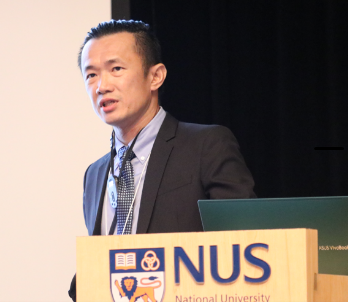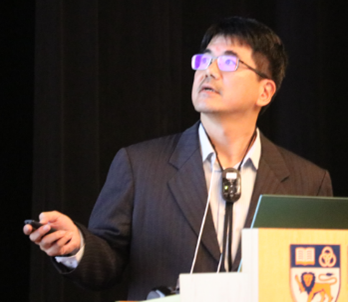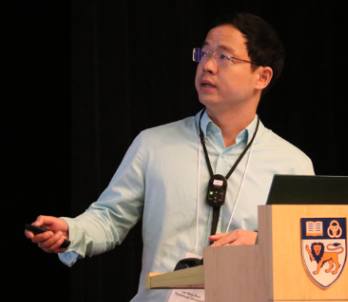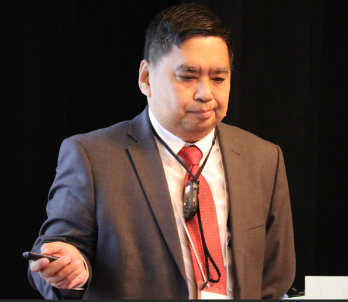Newsletter Volume 9, Issue 4 December 2024
Theme Lecture
Special Singapore Southeast Asia Session Report
Special Singapore Southeast Asia Session Report
Chair: Muthusamy Karthikeyan
Immediate Past President
Geotechnical Society of Singapore
Immediate Past President
Geotechnical Society of Singapore
The session featured four distinguished lectures from various experts in the field of press-in and silent piling technologies from four different countries:
Lecture 1: "From What Has Been Learned in the Past Decade to Foresee the Future of the Silent Piling Market in Taiwan"
Speaker: Mr. David Kuo-Wei Lin, Chuen Chang Enterprise Pte Ltd, Taiwan.
Mr. Lin explored the evolution and future of silent piling in Taiwan. He highlighted that the press-in piling method is extensively used for flood prevention and increasingly applied in urban settings and high-tech factories due to its benefits in densely populated areas, close proximity to neighboring buildings, and vibration sensitivity. He emphasized that future growth would depend on demonstrating the advantages of press-in piling methods over price reductions.
Lecture 2: "Application of Silent Piler in Thailand"
Speaker: Dr. Pastsakorn Kitiyodom, ATT Consultants Company Limited, Thailand.
Dr. Kitiyodom discussed the adoption of silent piling technology in Thailand, noting its growing use due to advantages in managing noise, vibration, and concerns about adjacent properties. He presented four case studies: the MRT Orange Line East Project, The Customs House Project, the Pa Sak River Improvement Project, and the Bang Sue Canal Improvement Project.
Lecture 3: "The Future Prospect of Press-in Technology in Vietnam"
Speaker: Dr. Vu Anh Tuan, Le Quy Don Technical University, Vietnam.
Dr. Tuan addressed the future prospects of press-in piling technology in Vietnam. He noted the technology’s significant potential not only in Vietnam and other developing countries but also in developed nations, where it can aid in disaster mitigation and environmental protection. Dr. Tuan highlighted that press-in piling technology provides optimal solutions in engineering, economics, environmental impact, and aesthetics, surpassing traditional methods.
Lecture 4: "Pressed-in-Pile Engineering in the Philippines: Current Practices, Future Prospects"
Speaker: Prof. Mark Albert H. Zarco, University of the Philippines, Diliman, Philippines.
Prof. Zarco reviewed the current practices and future prospects of pressed-in-pile engineering in the Philippines. He observed that, despite the common use of sheet piles, applications remain conventional, focusing on inland river and coastal protection. Press-in piling technology is mainly used with pre-cast piles and dead weight static drivers. He noted the potential for pre ss-in pling technology in disaster countermeasures but highlighted limited use of silent/gyro pilers due to unfamiliarity and cost concerns.
Overall, the session provided valuable insights into the advancements and applications of press-in piling technology across Southeast Asia, emphasizing its growing importance and potential in various regions.
Lecture 1: "From What Has Been Learned in the Past Decade to Foresee the Future of the Silent Piling Market in Taiwan"
Speaker: Mr. David Kuo-Wei Lin, Chuen Chang Enterprise Pte Ltd, Taiwan.
Mr. Lin explored the evolution and future of silent piling in Taiwan. He highlighted that the press-in piling method is extensively used for flood prevention and increasingly applied in urban settings and high-tech factories due to its benefits in densely populated areas, close proximity to neighboring buildings, and vibration sensitivity. He emphasized that future growth would depend on demonstrating the advantages of press-in piling methods over price reductions.
Lecture 2: "Application of Silent Piler in Thailand"
Speaker: Dr. Pastsakorn Kitiyodom, ATT Consultants Company Limited, Thailand.
Dr. Kitiyodom discussed the adoption of silent piling technology in Thailand, noting its growing use due to advantages in managing noise, vibration, and concerns about adjacent properties. He presented four case studies: the MRT Orange Line East Project, The Customs House Project, the Pa Sak River Improvement Project, and the Bang Sue Canal Improvement Project.
Lecture 3: "The Future Prospect of Press-in Technology in Vietnam"
Speaker: Dr. Vu Anh Tuan, Le Quy Don Technical University, Vietnam.
Dr. Tuan addressed the future prospects of press-in piling technology in Vietnam. He noted the technology’s significant potential not only in Vietnam and other developing countries but also in developed nations, where it can aid in disaster mitigation and environmental protection. Dr. Tuan highlighted that press-in piling technology provides optimal solutions in engineering, economics, environmental impact, and aesthetics, surpassing traditional methods.
Lecture 4: "Pressed-in-Pile Engineering in the Philippines: Current Practices, Future Prospects"
Speaker: Prof. Mark Albert H. Zarco, University of the Philippines, Diliman, Philippines.
Prof. Zarco reviewed the current practices and future prospects of pressed-in-pile engineering in the Philippines. He observed that, despite the common use of sheet piles, applications remain conventional, focusing on inland river and coastal protection. Press-in piling technology is mainly used with pre-cast piles and dead weight static drivers. He noted the potential for pre ss-in pling technology in disaster countermeasures but highlighted limited use of silent/gyro pilers due to unfamiliarity and cost concerns.
Overall, the session provided valuable insights into the advancements and applications of press-in piling technology across Southeast Asia, emphasizing its growing importance and potential in various regions.
 |
 |
 |
 |
|||
| Photo 1 Mr. Lin | Photo 2 Dr. Kitiyodom | Photo 3 Dr. Tuan | Photo 4 Prof. Zarco |
| << Previous | Newsletter Top | Next >> |








